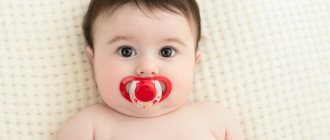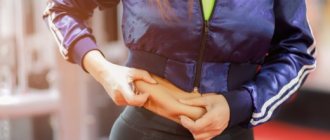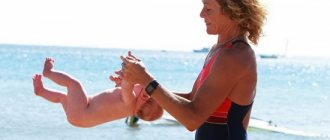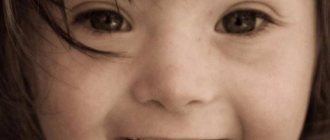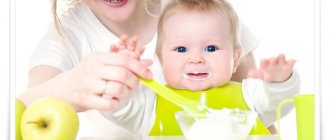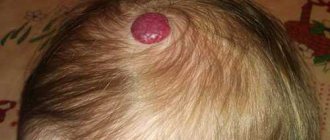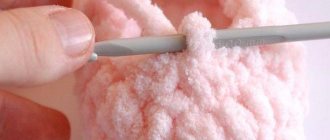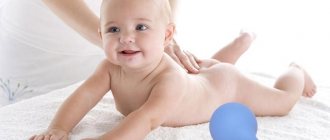The reflexes of newborn babies and children of the first year of life are unique protective reactions of the body, which are provided by nature so that the baby, who still knows nothing, can somehow respond to the actions taking place around him. In other words, this is the basic arsenal of tools necessary for a child to adapt to new conditions and acquire certain skills in the future.
Always in moving
6-7 weeks The little man already has his first sense organ - the vestibular apparatus. It helps maintain body balance even in unsupported spaces. The child spends his entire intrauterine life in motion: firstly, he constantly moves himself (observing the development of the fetus using ultrasound, you can see that he never remains motionless); secondly, the mother also moves, and the baby moves with her relative to the earth's axis. This is the first information about the outside world that the fetus receives. By the end of the intrauterine period, the child masters the mother’s movements so well that he distinguishes when she is calm, when she is excited, when she is tense, and also reacts to this with her movements.
The baby responds very well if he is moved in space (after all, he is so used to this after 9 months!). He quickly calms down when he is carried in arms or carried in a stroller. Parents often ask the question: is it necessary to rock a child so that he calms down and falls asleep? Yes, if he needs it, because movement is a normal state for a baby.
Reflexes - (Heel - p. V + n. VII)
Heel reflex (a blow with a hammer or your own finger on the heel in the direction of the shin - with the lower limb half-bent at the hip and knee joints - causes a reflex extension in the opposite direction to the tapping (a kind of push with the foot). This is primarily the LII-IV LIV-SII reflex, positive during the first 6 months of life.Later observed with spastic syndromes.
Rossolimo reflex (caused by hitting the fingertips with a hammer or your own finger from below, or tapping on the pads above the metatarso-phalangeal joints, resulting in plantar phasic nodding of the fingers).
LIV-V reflex, or spastic phenomenon in older children. Tapping also causes so-called axial reflexes, which include: Nasopalpebral reflex (a blow with a hammer or your own finger on the glabella or on the root of the nose causes bilateral blinking or closing of the eyelids).
Reflex item V + n. VII. The reflex is naso- and mentolabial (tapping the upper or lower lip in the midline causes protrusion of the lips). Reflex item V + n. VII. Tapping also causes the Chvostek phenomenon, which is not a reflex (a blow directly to the trunk of n. VII on the cheek causes a shudder in the area of its innervation, especially near the corner of the mouth. In infants, it is most easily caused by tapping on the central region of the connection of the corner of the mouth with the jugular bone).
“Physiology and pathology of newborn children”, K. Polachek
Aspects of the neurological examination of newborns
Thus, a neurological examination of a newborn has several aspects: In the cases shown, it is an integral part of the pediatric examination necessary to assess the general condition of the child. In most cases, there is no predominantly neurological disease - the indication for a neurological examination is based on the data of a pediatric examination: the child is developmentally delayed, his body weight gain is delayed, the presence of vegetative...
Reflexes - (n. IX—n. XII - Palm-oral reflex)
Reflex n. IX—n. XII. The reflex is auriculo-, naso- and palpebrocephalic (tactile stimulation of the auricle, nasal passage or one eyelid causes rotation of the head in the direction opposite to the irritation - aberrant movement). Reflex n. V+n. XI. Optical-facial reflex (a sharp approach of the researcher’s hand to the child’s eyes causes a protective closure of the eyelids from the 4th month of life). Reflex n. II+…
Selection of newborns for neurological examination
It is not necessary to undergo a neurological examination of completely normal newborns, in whose anamnesis and somatic picture there are no abnormalities and who are in a state of well-being and are developing well. In clinical practice, they are often satisfied with only an approximate assessment, that is, they evoke the Moro reflex and the grasping reflex. Using screening, it is necessary to examine newborns born to mothers who are pregnant or...
Reflexes - (n. V-n. VII - LIV - SII)
Reflex n. V—n. VII, CVII-VIII. Abdominal reflexes: upper, middle and lower. They are caused by tactile stimulation of the skin, for example, with a wooden pin, in the direction from the lateral surface of the abdomen to the navel, in the segments ThVII-IX, ThX, ThXI-XII, as a result of which, in accordance with the localization of irritation, homolateral contraction of the oblique muscles occurs. In a newborn and an infant, a simultaneous bending (incurvation) of the torso occurs in an arc,…
Selection of newborns for neurological examination (Clinical manifestations)
Clinical manifestations indicating the need for a neurological examination of the newborn include: sluggish sucking, the need for tube feeding; irregular breathing - apnea pauses; cyanosis and cyanotic seizures, bradyarrhythmia; apathy, lethargy, adynamia or severe anxiety; seizures; hypothermia; weak cry, abnormal vocal responses, cerebral cry; hiccups, vomiting; abnormalities of the Moro reflex; vicious posture, opisthotonus; pathological movements of the eyeballs; peripheral...
Touch everything
7.5 weeks The fetus develops skin sensitivity. First, it appears in the mouth area - this is preparation for the formation of the sucking reflex. From 8 weeks, the baby’s face and palms become sensitive, and from 10 weeks , the entire surface of the body. In the mother's tummy there is a lot of material for the baby to develop tactile sensations. With the help of ultrasound, you can see how the baby touches his own body, the umbilical cord, and the walls of the amniotic sac. The child begins to use his sensitivity not only to study the internal space of the uterus, but also to master the external world. If the mother puts her hand to her stomach, the baby tries to touch her “from the other side.” In the same way, even before birth, a child can “get to know” both his father and his brothers and sisters. The fetus also reacts very interestingly to the ultrasound sensor: at first, feeling the touch of an unfamiliar cold object, it tenses and moves to the side, but then, if the mother does not worry and relaxes, it calms down and begins to study the new object - it tries to touch the sensor with its palms or heels.
From the second half of pregnancy, when you already feel the baby moving, you can arrange a “mother’s session” for him. At the same time of day, place your hands on your stomach and sing a lullaby or any children's song to your baby. At this time, the baby will try to touch your hands “from the other side.” Every day you need to sing the same song - then the baby will get used to it and after birth he will recognize it and calm down when he hears a familiar melody. Such a session should last no more than 10 minutes so that the child does not get tired, but this must be done daily. You can arrange not only mom’s, but also dad’s “session”.
Unconditioned reflexes of the newborn
- Search reflex. Stroking the skin in the area of the corner of the mouth (without touching the lips) leads to lowering of the lower lip, deviation of the tongue and turning the head towards the stimulus. Thus the newborn seeks the mother's breast;
- Proboscis reflex. Lightly tapping a finger on the baby's upper lip provokes contraction of the orbicularis oris muscle, causing his lips to extend into a proboscis;
- The sucking reflex in newborns is manifested by rhythmic sucking movements when placing a pacifier or index finger in the baby's mouth;
- Babkin's palmo-oral reflex. When pressing on the palm near the eminence of the thumb, the baby tears off its mouth;
- The grasp reflex in a newborn is manifested by bending the fingers and grasping an object in response to line irritation of the skin of the palm;
- Robinson reflex. By grasping something with his hands (for example, mother’s fingers), the baby is able to support the weight of his own freely hanging body;
- Moro reflex. This reflex can be evoked in various ways: using a loud clap in the palm, hitting the bed at a distance of 10-15 cm from the child, passive extension of the lower limbs, changing the position of the baby’s body in space (raising up and then lowering). In all cases, the reaction will be the same: first, the baby will spread his arms to the sides, and then bring them together, as if making an embracing movement;
- Support reflex. The newborn, placed against a support, straightens his legs and firmly rests his feet on the surface;
- Automatic walking reflex. If you hold the baby under your arms and at the same time slightly tilt his body forward, holding his head, he will begin to perform stepping movements;
- Bauer reflex. This reflex in newborn babies is manifested by crawling movements when pressing on the surface of the feet while lying on their stomach;
- Protective reflex. If you lay a baby on his stomach, he will immediately turn his head and try to lift it, saving himself from suffocation;
- The inferior grasp reflex in newborn babies can be seen when pressing on the front of the sole. In response, tonic flexion of the toes occurs;
- Babinski reflex. Streak irritation of the edge of the sole of the baby leads to involuntary extension of the big toe and fan-shaped divergence of the rest;
- Duck reflex. When a stream of water, milk or air hits the nose, the child holds his breath.
Secrets of taste
9 weeks The fetus develops taste buds on the tongue and develops taste sensitivity. The fetus swallows amniotic fluid, and its composition and, accordingly, taste changes depending on the conditions. So, for example, if something bitter gets into the amniotic fluid, for example, a disinfectant that is used when collecting amniotic fluid, the baby begins to wince, sticks out his tongue, and makes fewer swallowing movements, as if he is trying to spit out something he doesn’t like. But the introduction of glucose into the amniotic fluid accelerates the swallowing movements of the “sweet tooth.” What the mother eats also enters the amniotic fluid in microdoses. And if a pregnant woman eats, for example, garlic or lemon, the taste of the water becomes more bitter or sour, causing the baby to wrinkle.
Even before birth, a mother can accustom her child to her favorite dishes, even if they have a specific taste. So, for example, if dishes with garlic are part of your daily diet, you shouldn’t give them up completely. Over time, the baby will get used to them and begin to perceive them calmly. There are facts confirming that after birth a child often shows preferences for those dishes that the mother loved to eat during pregnancy.
Dear women, here you will find
There are about a hundred ways to check your baby’s health, use the basic ones.
The Apgar score is the first assessment in a child's life. Immediately after being born into the world and carefully reviewed by doctors, the child receives the first assessment in his life - on the Apgar scale. Heart rate, breathing rhythm, muscle tone, the presence of first reflexes, skin color - all this is assessed in the first minutes of the baby’s life. The best of the best receive 10 points, the majority - 7-8.
Your baby was not included in the championship at birth and received less than 10 points? Don’t worry: almost all the kids who were a little behind at the start soon catch up with their peers. To reassure yourself completely, check your child’s unconditioned reflexes yourself.
Sucking reflex. In the first two to three days after birth, the sucking reflex in most babies is not as actively developed as we would like.
And some babies will have to “explain” for a long time and patiently that their mother’s breasts are very tasty. Don’t be upset and don’t make hasty conclusions about the baby’s health - in the vast majority of babies, the sucking reflex “blooms” on the third day. Kussmaul reflex. In other words, the search effect. The baby, feeling the touch of his mother’s nipple (or finger) on his cheek, returns his head in that direction, trying to catch the “source of happiness.” This reflex lasts up to 3-4 months.
Then vision replaces it: the baby sees a breast or a bottle and is guided by visual associations, not tactile ones. Gag reflex. It sounds terrifying. This means the following: if something hard rests against the back of the baby’s throat, his lower jaw and tongue make pushing movements.
This reflex is stored in a person throughout his life, but the tongue participates in it only for the first 6 months. This is why it is so difficult to teach a baby to eat from a spoon in the first half of his life.
Special group: spinal reflexes. This group of reflexes indicates the normal functioning of the central nervous system. Babkin reflex. Press the baby's palm. He opened his mouth immediately, didn’t he? And sometimes - little eyes. This reflex is clearly expressed in the first month of life. Before the end of the second he disappears. Robinson reflex. Place your finger in the baby's palm and press a little. The baby grabbed his finger so tightly that you could even lift it, right? This reflex can be used for educational games. Give the baby an object (or your fingers) in his hands and let him try to get up.
This simple exercise develops the child's muscles and expands the boundaries of the baby's world, providing a beneficial effect on the overall development of the baby. Grasp reflex on the legs. If you press your thumb on the pad under your baby's fingers, he will bend his fingers. And if you run from toes to heel, he fans out his toes. This reflex lasts up to 3-4 months. Reflex of support and automatic walking. If you lift the baby under the armpits, he will bend his legs, and if you put him on a support, he will straighten his spine and stand on his full foot. Now tilt your baby forward - he will automatically take a step forward. This reflex lasts up to 2 months. It can be used during physical exercises. Protective reflex. If a baby under one month of age is placed on his tummy, he will turn his head to the side. This way the baby ensures freedom of breathing. In the second month, he will learn to hold his head and this reflex will be forgotten and will no longer be needed. Active defense reflex. If you prick a baby (for example, during a blood draw for analysis), he will accept the arm or leg, and the second time he will make repulsive movements, trying to protect himself from the offender. Crawling reflex. Appears on the 3-4th day of life, starting from the 4th month it gradually fades away. Place the baby on his tummy and the base of his hands under his legs. The baby will try to push off and crawl. This is a very interesting and very useful exercise. Perez reflex. For some reason, this reflex is unpleasant for babies: when checking it, children scream, arch their backs, raise their heads, arms and legs. Therefore, do not strain your baby by frequently checking this reflex. Testing method: put the baby on his tummy and run your fingers along the ridge from the tailbone to the neck. A simple movement, but so many emotions! Unfortunately, negative... But such a reaction is evidence of the correct development of the central nervous system, so sometimes you will have to give the baby some unpleasant seconds... The Perez reflex lasts up to 3-4 months. Galant reflex. Make the opposite movement: run your fingers along the baby’s spine from the neck to the tailbone. The reaction of a healthy baby is this: the baby will arch his back in your direction, and his head will return there too. Sometimes the leg is extended and abducted. This reflex appears on the 5-6th day of life and lasts up to 3-4 months. Boro reflex. This reflex can be tested in different ways. Here is one of them: let the baby, when he is lying on his back, grab his fingers and let him try to rise.
But before his head leaves the table, take his fingers away. In response to such a not very honest provocation, the baby will sharply spread his arms to the sides, his fingers will be spread out. Then the baby will lower his arms and bend them at the elbows. The effect of a hug will come out: in this way the baby tries to cling to his mother, having suddenly lost her. This reflex, apparently, was inherited from our distant ancestors - monkeys. It manifests itself very clearly in the first month of life, and disappears by 4-5 months.
| < Previous | Next > |
World of sounds
14 and 16 weeks The fetus begins to hear. Until 16 weeks, he perceives sound only as vibration. At 16 weeks, we already see the child’s reaction directly to the sound - he can turn his head in the direction from which the sound that interested him came, cover his face with his hands when there are sharp, frightening sounds. Many people believe that when a child is born, he moves from a quiet “house” into a world of noise. In fact, everything is different: from an intense sound environment he is transported to a world where there is not much sound. What does the fetus hear in the stomach? The beating of the mother's heart, the noise of blood flow through the vessels, reminiscent of waves rolling on large pebbles, the work of the intestines, similar to the purring of a cat... There is evidence that even before birth a child develops sensitivity to the speech of others and, naturally, to the speech of the mother. He is especially good at understanding intonation. Parents' quarrels, accompanied by shouting, frighten him, but friendly conversation calms him down. All this can be tracked by the intensity of the heartbeat and movements of the fetus.
When a child is born, the speech that he heard while in the stomach already carries an emotional load for him, and he easily adapts to it.
Reflexes of newborn children and their meaning
Surely from school we remember the axiom that all reflexes are divided into conditioned and unconditioned. The first ones are acquired, formed in the process of life experience. We all receive unconditional things by inheritance. In people they manifest themselves as the body’s reaction to environmental stimuli. Reflex reactions serve for better, easier adaptation of the child to circumstances that cannot be changed.
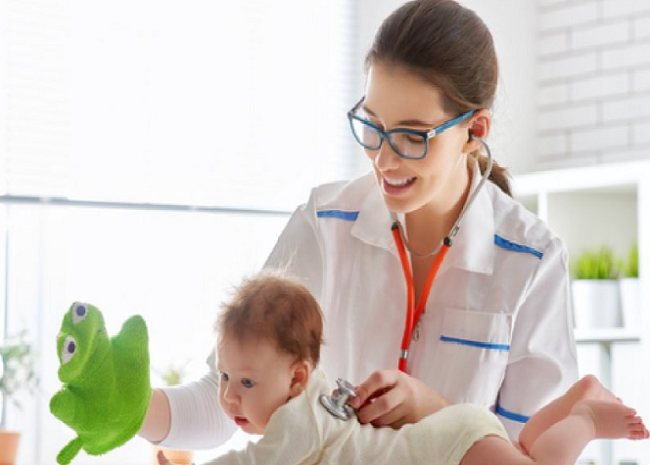
A newborn child is born only with unconditioned such reactions. Conditional ones are developed over time, in the process of its further development.
Some reflexes arise immediately after birth and remain with a person for life without changing. These include the swallowing muscle, which is responsible for the automaticity of swallowing. We, adults, do this automatically, without thinking, as soon as the chewed food enters the throat. A newborn baby does the same by drinking mother’s milk.
The corneal reflex causes blinking when the cornea of the eye is touched. It appears at birth and serves a person throughout his life.
The tendon is something that neurologists often check during examinations. Hitting the tendons with a hammer causes muscle contractions and jerking of the legs.
So, the reflexes of newborn babies are their first adaptations to life, the body’s automatic abilities that help them live outside the womb of their mother.
I see the light!
25 weeks The baby’s vision organs begin to function. Of course, in the uterus the mother does not have much information for the development of vision, but this is quite enough for the baby. It has been proven that the fetus already has light perception. So, he sees sunlight in muted orange tones and reacts positively to scattered rays, but hides from direct rays, squinting his eyes.
Even before birth, the baby likes sunlight, he can distinguish it, even if the mother is wearing light clothes. Therefore, in warm weather it is necessary to be in the fresh air (this, by the way, will also be a good prevention of rickets). But you should not expose your child to sunlight for too long, as this tires and overstimulates him.
